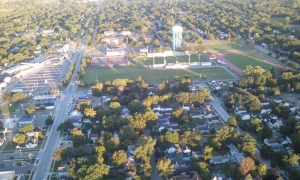Your home or business is an investment. If your construction project does not comply with the codes adopted by your community, the value of your investment could be reduced. Property insurers may not cover work done without permits and inspections. If you decide to sell a home or building that has had modifications without a permit, you may be required to tear down the addition, leave it unoccupied or do costly repairs. A property owner who can show that code requirements were strictly and consistently met–as demonstrated by a code official’s carefully maintained records–has a strong ally if something happens to trigger a potentially destructive lawsuit. Your permit also allows the code official to protect the public by reducing the potential hazards of unsafe construction and ensuring public health, safety and welfare. By following code guidelines, your completed project will meet minimum standards of safety and will be less likely to cause injury to you, your family, your friends or future owners.
The Simple Permit Process
Talk to Your Local Code Official Your code official wants your project to be a success and will help you avoid potential problems that could cost you time and money. You will be asked some basic questions (What are you planning to do? Where?), advised of any requirements and, if necessary, referred to other departments for their approval. The code official will provide you with the resources and information needed for compliance with the applicable building codes. You will then receive an application for a building permit.
Submit Application
At this stage you will document the “Who, What, When, Where and How” of the job, along with any sketches or plans of the proposed work. Review Process In a brief amount of time, the code official will review your plans and determine if your project is in compliance with local requirements. If your plans meet these requirements, a permit is issued. If not, the code official may suggest solutions to help correct the problem.
Review Process
In a brief amount of time, the code official will review your plans and determine if your project is in compliance with local requirements. If your plans meet these requirements, a permit is issued. If not, the code official may suggest solutions to help correct the problem.
Receive Permit
Now that you have been approved for a permit, you have legal permission to start construction. A fee, based on the size of the job, is collected to cover the cost of the application, the review and the inspection process. An experienced code official is available to you should you have any questions concerning your project. You should consider your code official as an ally who will help you make your project a success. Normally, separate permits are required for electrical, plumbing, and heating or air-conditioning work.
Job-site Visits
On-site inspections will be required to make certain the work conforms to the permit, local codes and plans. Again, you will have access to the expertise of the code official to help you with questions or concerns regarding the project and to ward off potentially costly mistakes. The code official will let you know approximately how many inspections may be needed for your project. Usually, a one- or two-day notice is needed when requesting visits.
Final Approval
The code official will provide documentation when construction is complete and code compliance is determined. You will then have the personal satisfaction of a job done right. Enjoy your new surroundings with the peace of mind and the knowledge that they meet the safety standards in your community.


